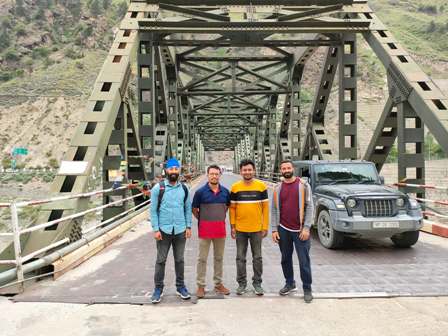
A research team of the Indian Institute of Technology (IIT) Mandi led by Dr. Subhamoy Sen, Associate Professor, School of Civil and Environmental Engineering, has developed an innovative method to monitor the health of aging bridges using traffic data. This approach zeroes in on the most vulnerable parts of a bridge, significantly enhancing safety and efficiency.
Dr. Subhamoy Sen, along with his research scholar, Eshwar Kuncham, has addressed the challenges of fatigue-induced damage and gradual deterioration of bridges by focusing on the most critical areas instead of monitoring the entire structure.
The research published in the journal ” Structural Health”, is based on an innovative approach by developing a digital model of the bridge—a detailed, virtual replica based on an initial study of the actual structure. This model predicts how different traffic patterns impact various parts of the bridge over time, helping experts identify the area’s most susceptible to damage.
After pinpointing these critical zones, fatigue-sensitive sensors are installed at key locations to monitor stress and vibrations. This real-time data, combined with traffic patterns from the digital model, allows experts to track how traffic affects the bridge over time. If necessary, adjustments to traffic flow and speed can be made to ensure the bridge’s safety and prevent damage.
Traditionally, assessing a bridge’s Remaining Useful Life (RUL) involved simplistic methods with broad safety margins, which were not always accurate.
Highlighting the practical benefits of his research, Dr. Sen said, “Our approach focuses on monitoring only the critical zones of a bridge, significantly reducing costs and the need for extensive equipment. By leveraging traffic data, we provide real-time assessments and make timely interventions, ensuring bridge safety and longevity without major traffic disruptions.”
This method also allows for rapid assessments after events like earthquakes or floods, aiding officials in making quicker safety decisions. Once the initial setup is complete, regular monitoring can be handled by less specialized personnel, further reducing costs and making it easier to apply to multiple bridges. It also minimizes extensive and disruptive traffic management during inspections, reducing inconvenience for commuters.
.

